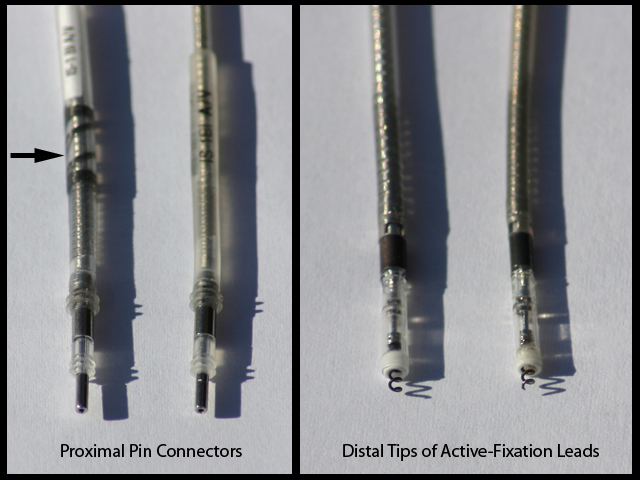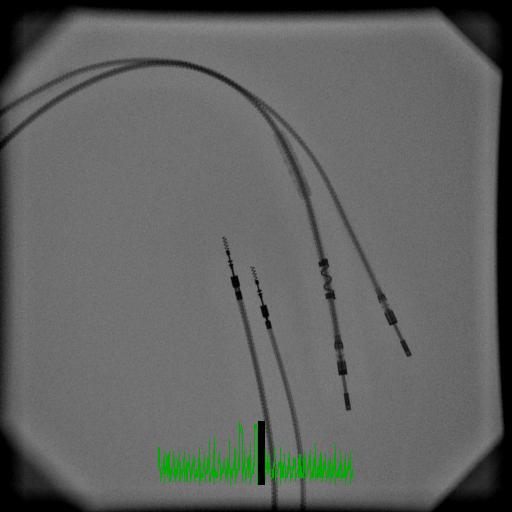... a little thicker, certainly, but otherwise (at least on the surface), not too much:
The recently-approved MRI-safe active-fixation lead from Medtronic (left lead in each frame) is compared to their conventional active-fixation lead. The arrow denotes the radio-opaque marker that can been seen on x-ray to identify the type of lead in the patient's body. A fluoro image of the two leads is shown below, again with Medtronic's MRI-safe lead on the left:
While the engineering hurdles were no-doubt considerable to make an MRI-safe pacemaker lead, given the growing body of evidence that newer pacemakers (when carefully monitored) can be scanned in MRI machines, I suspect the biggest difference in these leads is not their design per se, but rather the regulatory paperwork (and research) that had to be completed to document their safety.
Of course, the fact that CMS would not pay for MRI scans performed on patients with pacemakers before the advent of these newer devices probably also limited the number of scans performed.
-Wes


Wes,
ReplyDeleteNot sure if you go back and look at comments on posts this old.
Any comments on the extension/retraction performance of this lead?
I'm worried. Had to sweet tip one in today.
All of my implants (including the ones we did in the research trial) took a large and inconsistent amount of turns to extend. This is going to make everything harder.
I'll be very sorry to see the 5076 party ending. That's a heck of a lead.
Jay